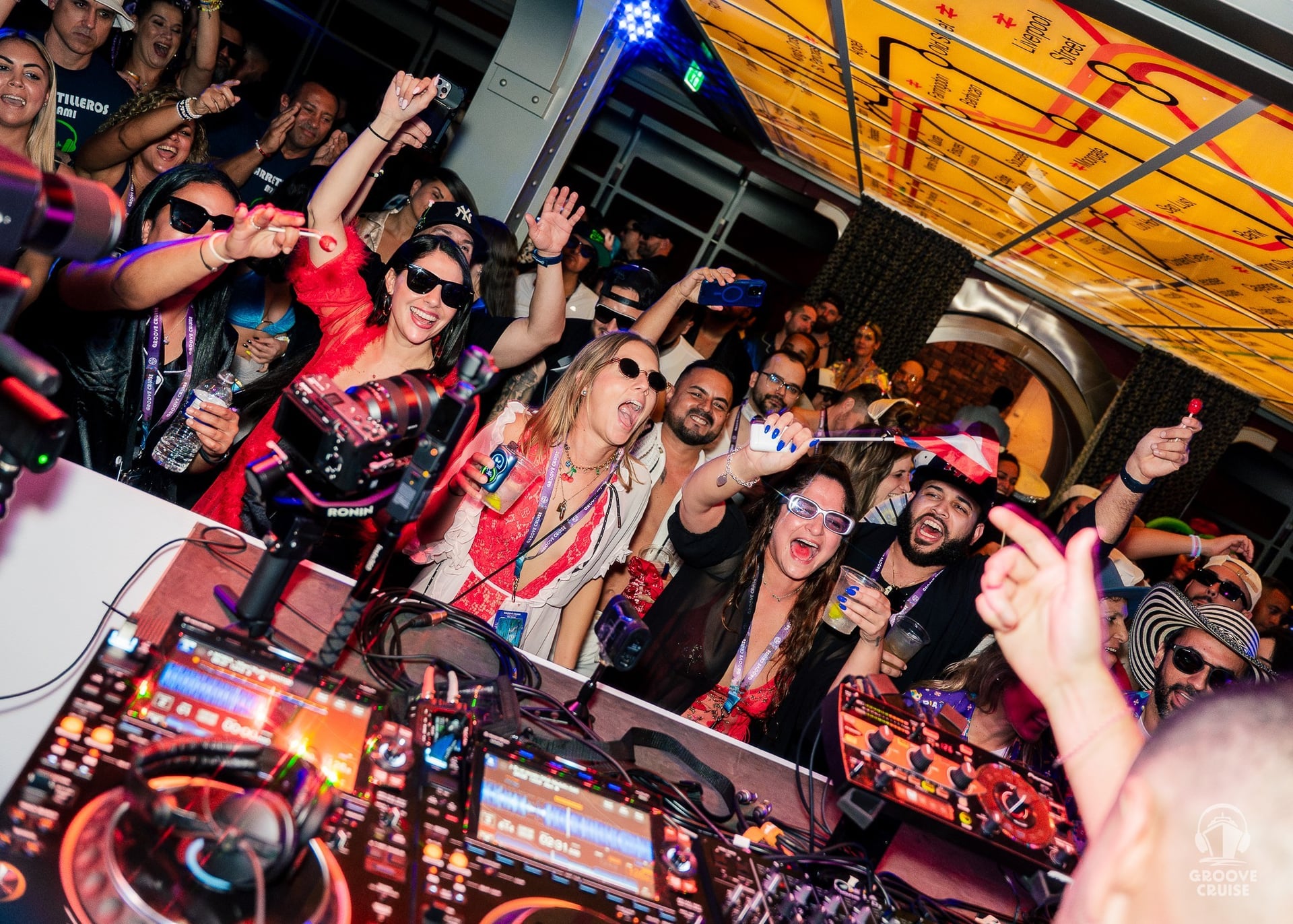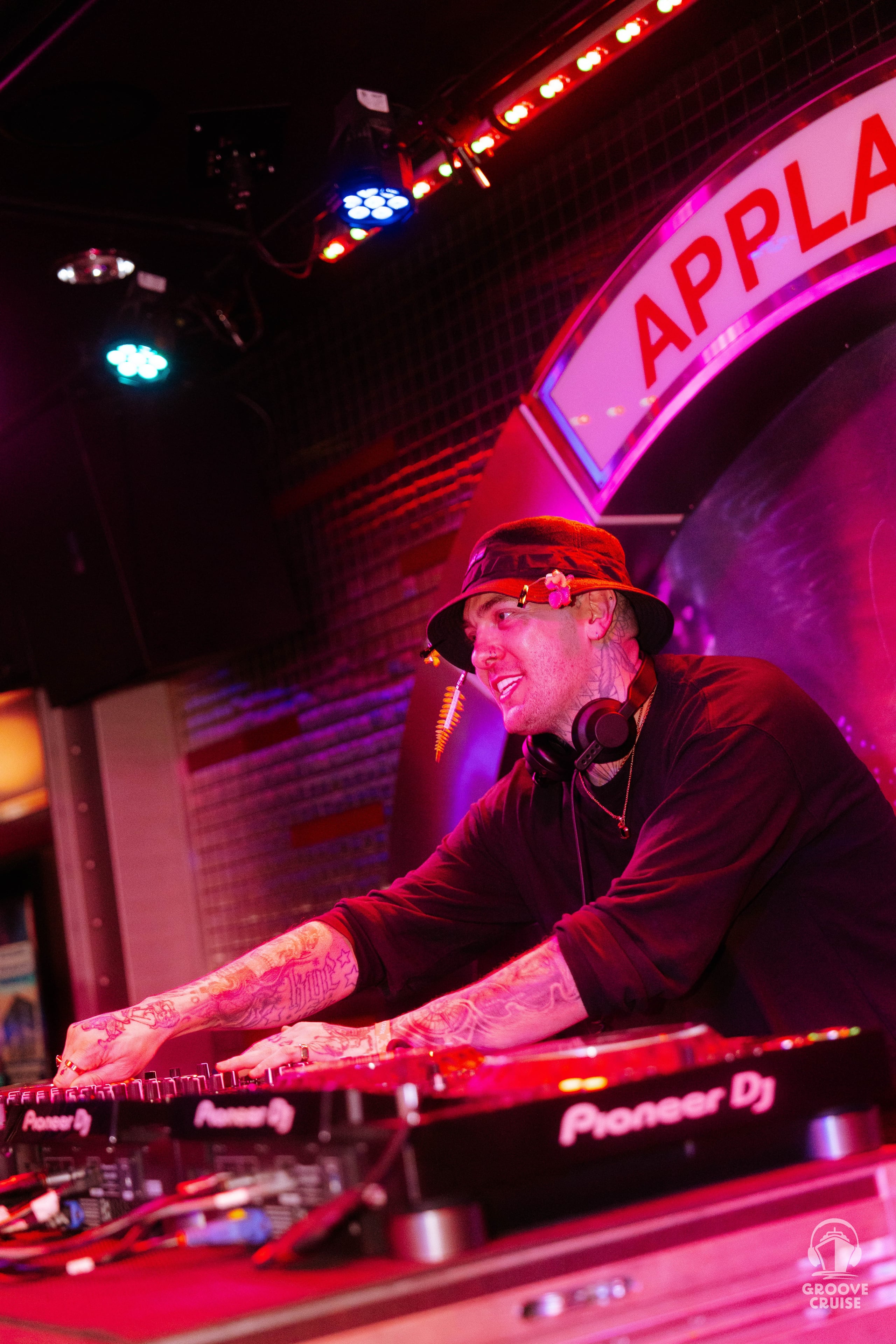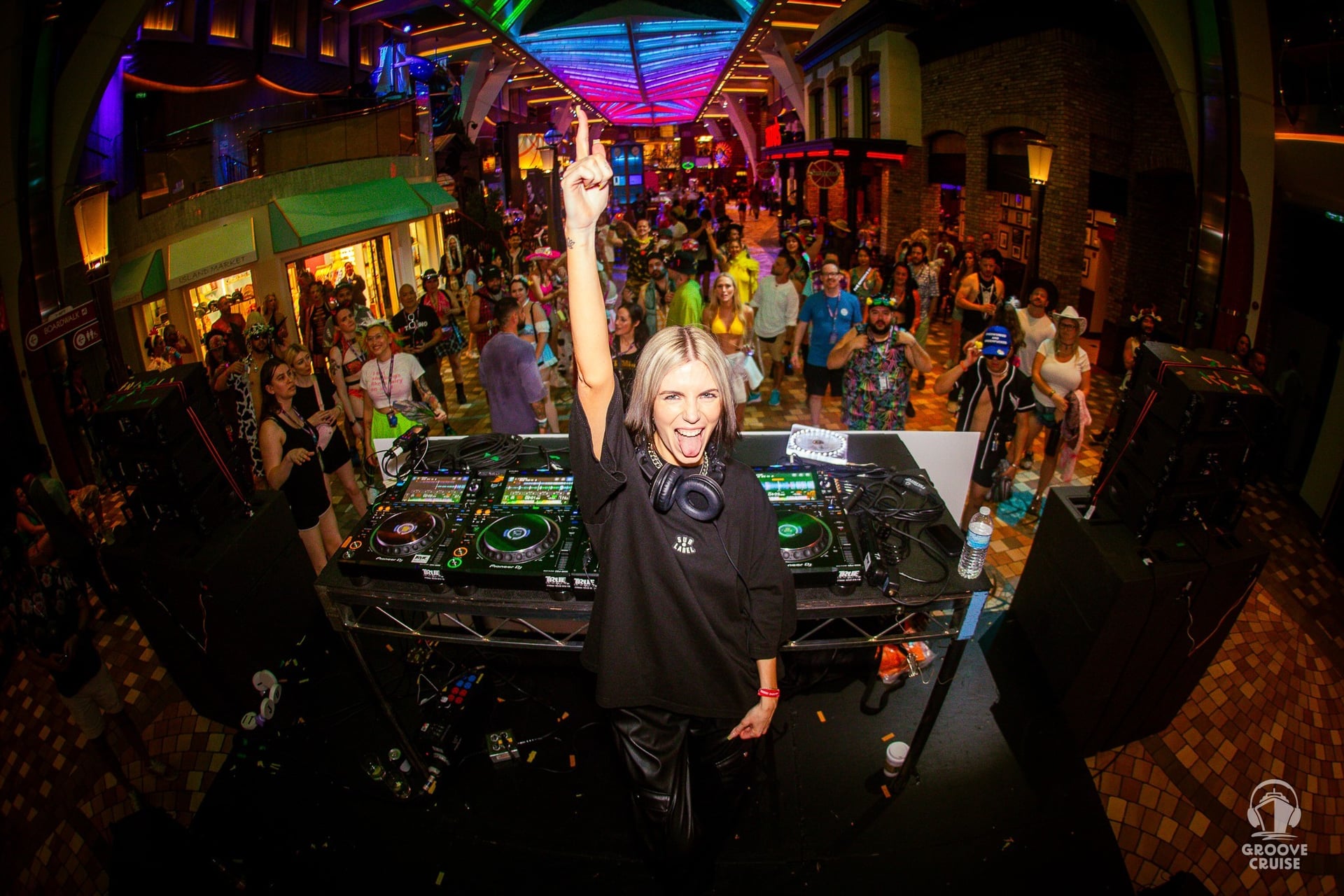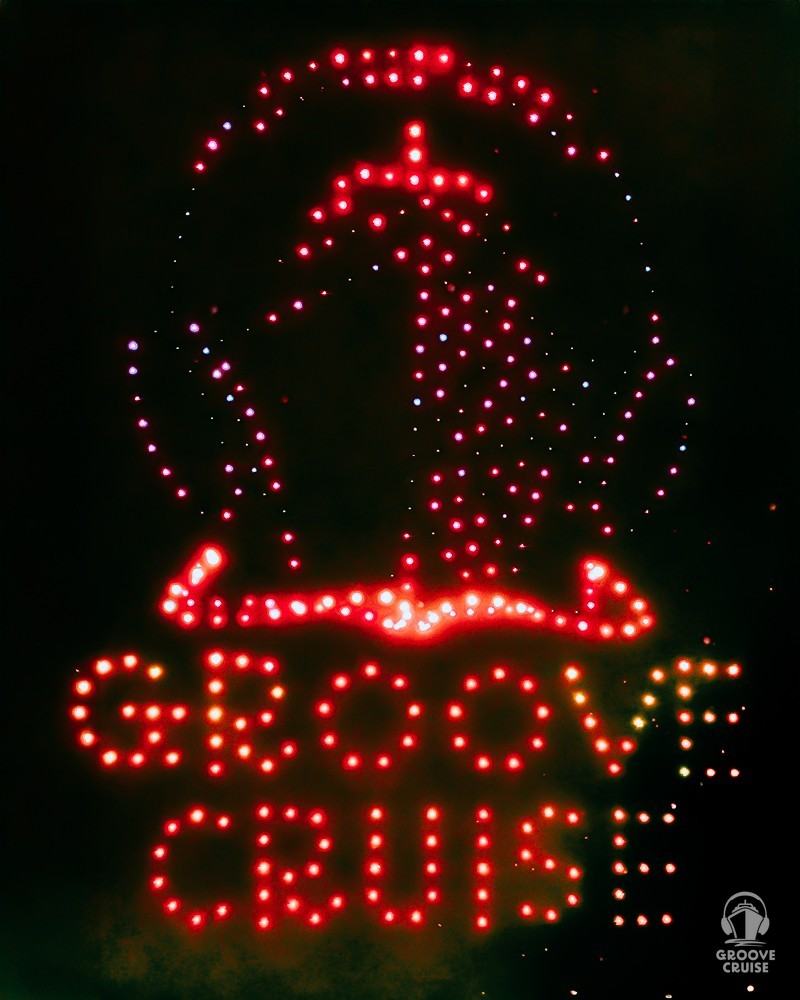
Drum & Bass (D&B) isn’t just music, it’s movement! Born from the UK’s jungle and breakbeat underground, the genre has grown into a global force, blending rapid-fire breakbeats (160–180 BPM) with deep sub-bass, soaring melodies, and energy that grips both body and soul.
On Groove Cruise, that energy finds its home in The Trench, a space dedicated to drum & bass culture, where Captains can dive headfirst into fast tempos, euphoric drops, and a community that thrives on connection.

At sea, drum & bass takes on a new dimension:
Though still new to Groove Cruise, The Trench is already making waves. Here are some highlights:
Who do you think might do a surprise DnB set on Groove Cruise Miami 2026? 👀Check out the full lineup here!
Want to understand what you’re hearing in The Trench? Here’s a quick primer:
The beauty of The Trench is its versatility. You’ll hear the full spectrum, from smooth and melodic to heavy and relentless.

As drum & bass surges worldwide, The Trench is growing with it, becoming one of the most anticipated parts of Groove Cruise. From veteran Captains discovering a new passion to longtime D&B heads finding a home at sea, the community is expanding every voyage.
Expect more:
The Trench represents a new frontier. A place for discovery, connection, and movement that keeps evolving with every sailing.
What is the difference between jungle and drum & bass?
Jungle, which emerged in the early 1990s, laid the foundation for drum & bass with breakbeats, reggae influences, and heavy basslines. Drum & bass evolved from jungle, focusing on faster tempos (typically 170 BPM), cleaner production, and a broader range of substyles like liquid, neurofunk, and jump-up.
Why is drum & bass so fast?
The tempo of drum & bass (usually 160–180 BPM) creates its signature intensity. The fast rhythm delivers adrenaline on the dancefloor while still leaving room for deep basslines and melodic atmospheres.
What’s the role of MCs in drum & bass?
MCs (masters of ceremony) are an integral part of drum & bass culture. They hype the crowd, add lyrical flow, and create a deeper connection between the DJ and the dancefloor. At sea, MC-led sets in The Trench bring even more energy and interaction.
What are the main drum & bass subgenres?
D&B spans many styles, including liquid funk (melodic and soulful), neurofunk (dark and technical), jump-up (bouncy and fun), and atmospheric/ambient (spacey and minimal). Each has its place depending on the vibe of the set and time of day.
Why is drum & bass growing in popularity again?
A new wave of producers and cross-genre collaborations have pushed drum & bass back into the spotlight. Its mix of high energy, emotional depth, and technical skill appeals to both veteran ravers and new fans discovering the sound for the first time.
How is drum & bass different from other electronic genres like house or techno?
House and techno often run at 120–130 BPM with a steady four-on-the-floor beat, while drum & bass is defined by syncopated breakbeats and much faster tempos. The result is a more frenetic, rolling energy that feels distinct on the dancefloor.
Check out our other blogs to learn more about all the genres you’ll experience aboard Groove Cruise!
Drum & Bass is about energy, resilience, and release, and at sea, it transforms into something more. Whether you’re a lifelong junglist or hearing your first rolling breakbeat, The Trench invites you to lose yourself in the sound, the sea, and the community that makes it all possible.
When the bassline drops, will you dive in?
Sign up HERE for the latest Groove Cruise news, exclusive discounts, merch promos, and to be notified when a new cruise is launched!
